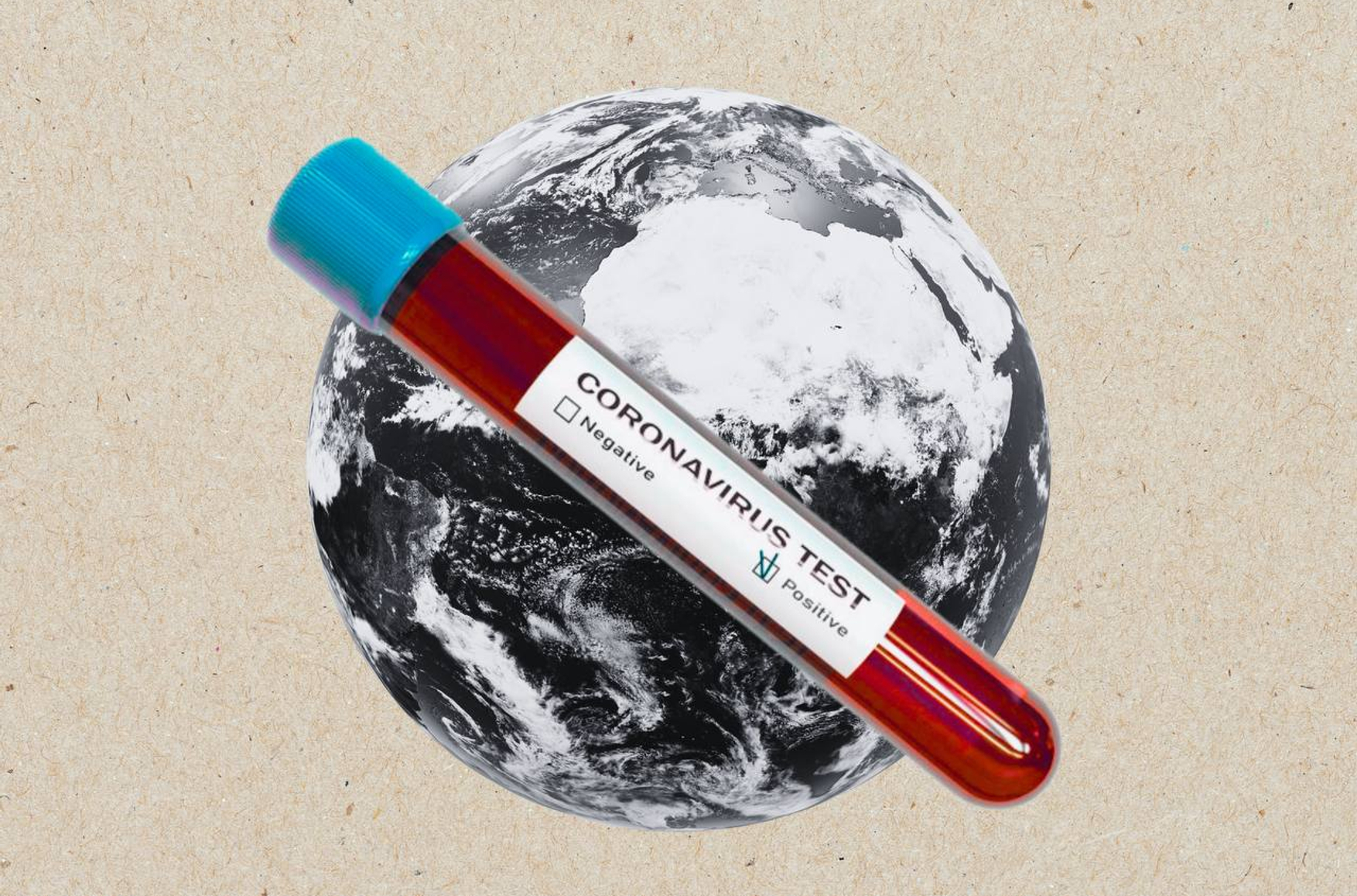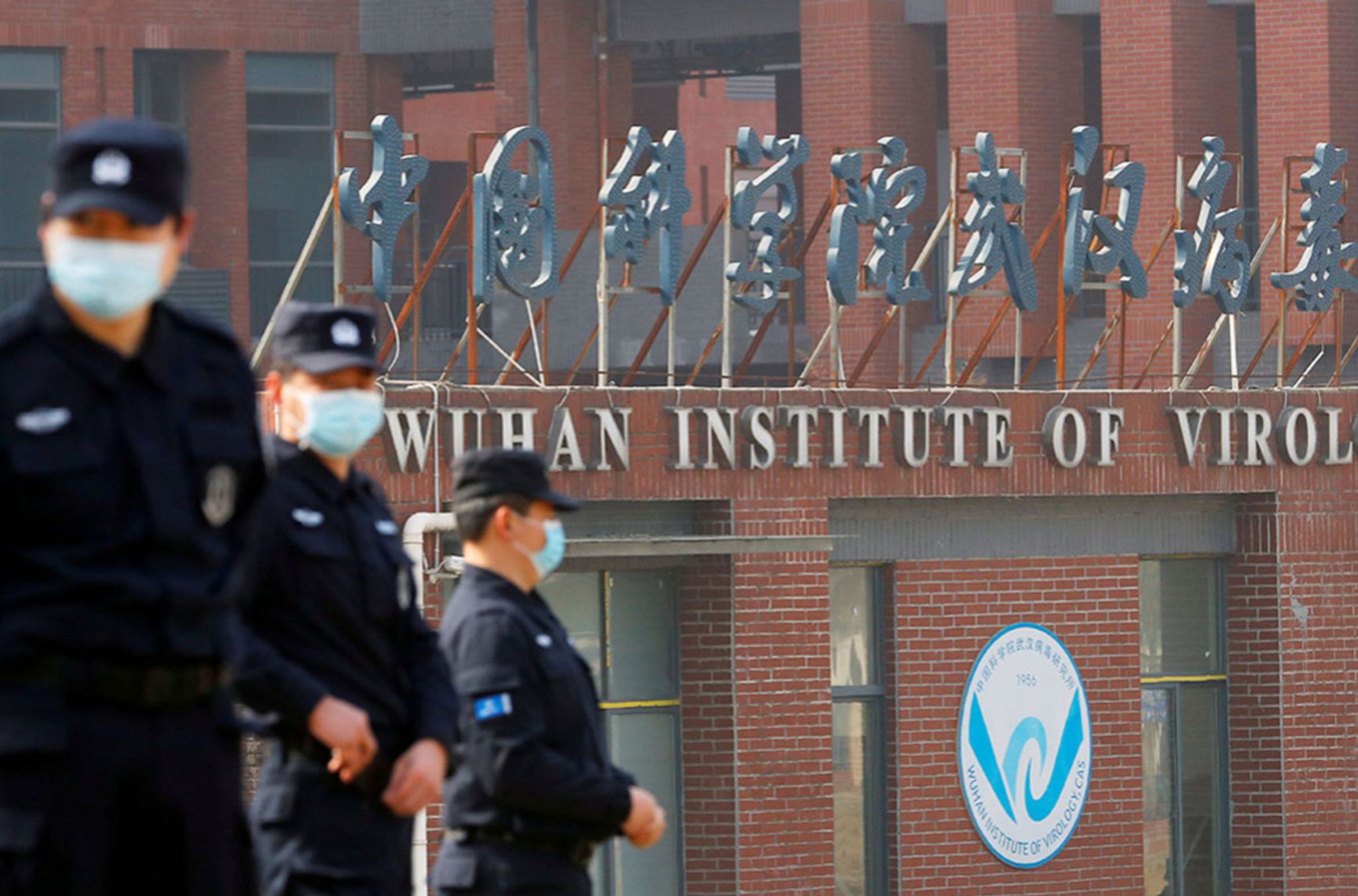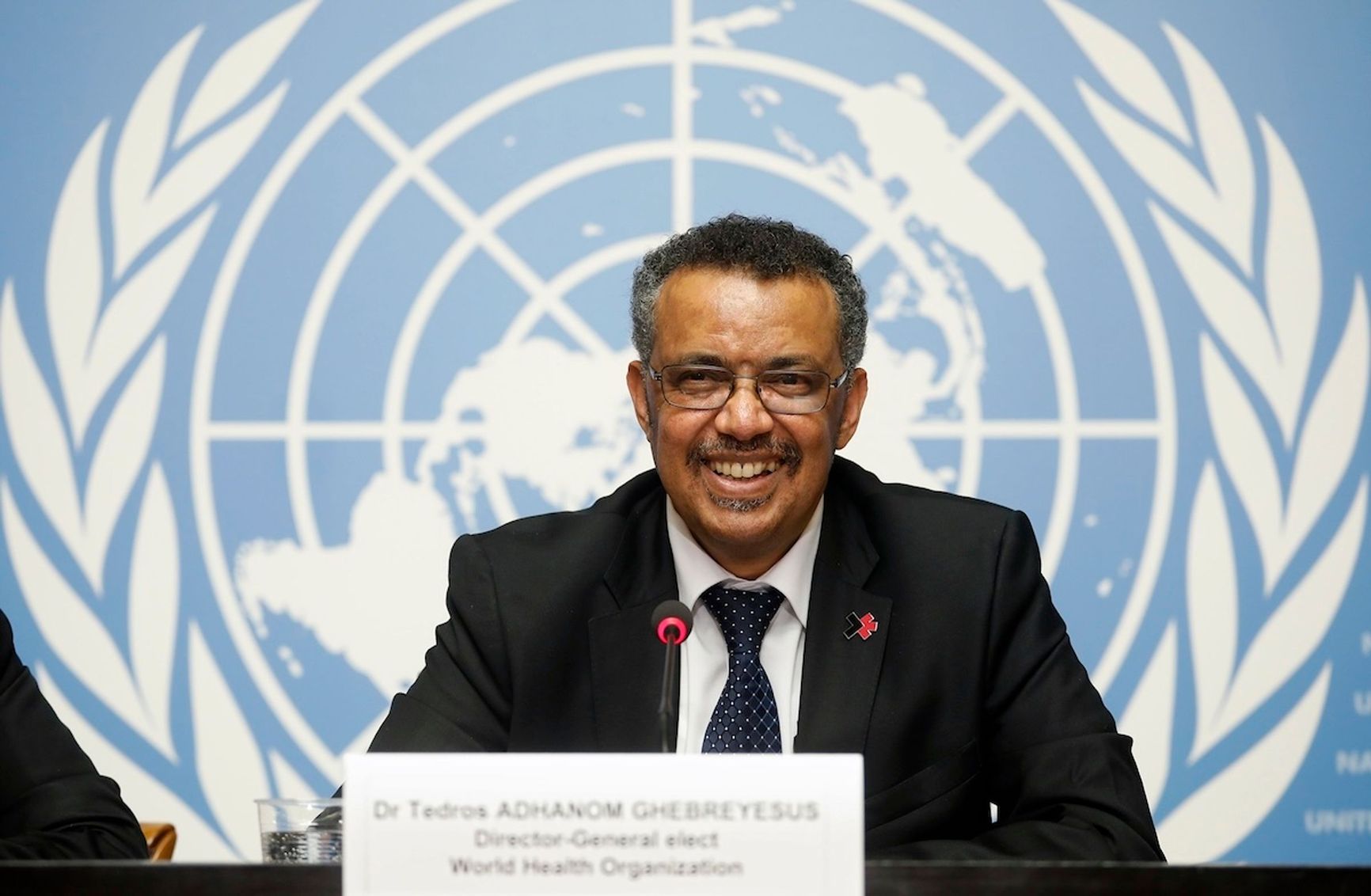

It has been exactly five years since the World Health Organization declared the COVID-19 outbreak a “public health emergency of international concern.” Yet experts believe that the world still has not taken the proper measures to ward off a new pandemic. Although effective diagnostic methods are widely used in healthcare and trust in doctors is growing, there are also counter trends: the number of conspiracy-theorist anti-vaxxers has increased significantly worldwide, which has already led to outbreaks of diseases such as whooping cough and measles. Another threat is the disruption in international relations. Donald Trump’s decision to withdraw the U.S. from the World Health Organization is one of the most striking examples.
Content
Conspiracy theorists undermine trust
What authorities have done — and failed to do — after the COVID pandemic
What could cause the next pandemic
More than 7 million people have died as a result of the SARS-CoV-2 virus (the official name of the coronavirus that caused the recent pandemic), according to confirmed data from the World Health Organization. Other estimates suggest the actual death toll could be three times higher. The economic losses from the pandemic amounted to $16 trillion, with around 130 million people pushed into poverty. And this does not include the collateral damage to education systems (due to the shift to remote learning), healthcare (long-term effects of COVID have led to widespread diagnoses of chronic fatigue, memory and concentration problems, breathing difficulties, joint pain, and other symptoms), and the labor market (in the UK, for example, around 2.8 million people are out of work due to prolonged illness — 676,000 more than before the pandemic — and stress, depression, and anxiety among Britons resulted in the loss of 16.4 million workdays in 2023–2024).
Five years later, the coronavirus pandemic still hasn’t ended. While COVID is no longer a fixture in the news, the danger remains. The WHO receives mortality data from only 34 countries, but even within this limited sample, at least 4,000 deaths per month are recorded on average. Scientists note the extraordinary speed of coronavirus evolution, which causes new strains to trigger repeated infections and vaccines to lose effectiveness quickly. At the same time, vaccination rates have plummeted. Since the beginning of 2024, fewer than 2% of people over 60 — those in this high-risk group — have received a COVID vaccine dose worldwide. A similar situation exists among healthcare workers. In Russia, mandatory COVID vaccination was canceled in the fall of 2024, remaining in place only for high-risk groups.
But the main issue is that, despite all the noise surrounding the pandemic, the world still appears to have taken insufficient steps to prevent its recurrence.
Conspiracy theorists undermine trust
Five years on, scientists have yet to reach a definitive conclusion as to the origins of COVID, fueling the imagination of conspiracy theorists and making it a tool in political battles. These unscientific theories, along with the initial contradictory recommendations from medical experts, have eroded trust in actual scientific expertise.
At the end of 2024, a U.S. congressional committee led by Republican lawmakers accused the WHO and the Chinese Communist Party of covering up the true scale of the pandemic. It also questioned the necessity of mandatory vaccination and quarantine measures, and it linked the emergence of the coronavirus to U.S. funding of an infectious disease research lab in Wuhan. In response, Democrats released their own report refuting the Republicans' conclusions. They argued that the viruses studied in Wuhan with U.S. funding were too dissimilar to SARS-CoV-2 to have caused the pandemic.
Organizers of a scientific conference in Japan, held in December of last year to discuss the outcomes of the pandemic, even tightened its security over concerns that scientists might be attacked by supporters of the lab-origin theory. The discussion itself turned out to be emotional.
Only one participant presented a report suggesting that the SARS-CoV-2 virus originated from a lab in Wuhan. However, his hypothesis faced sharp criticism from colleagues. Another researcher analyzed data from the infamous Wuhan seafood market, which was linked to the first known coronavirus infections. She found genetic evidence indicating that infected raccoon dogs and badgers might have been present there. However, direct proof — actual infected animals — was never found.

Wuhan Institute of Virology
As of early 2025, the most honest answer to the question of where COVID-19 came from remains frustratingly simple: no one knows exactly. The WHO could have settled the debate, but its experts refrain from drawing conclusions, citing the same lack of information. They continue to call on the Chinese government to share data that could help determine the virus’s origin. “Without transparency, data sharing, and international cooperation, the world will not be able to adequately prevent and prepare for future epidemics,” the WHO stated in a recent announcement.
As of early 2025, the most honest answer to the question of where COVID-19 came from remains frustratingly simple: no one knows exactly
The rise of conspiracy theories has led to a sharp increase in the number of anti-vaxxers, posing a threat to future vaccination campaigns in the event of new pandemics. In 2023, about 70% of British adults believed that vaccination was safe and effective, compared to 90% in 2018. Researchers observed growing vaccine skepticism in 52 out of 55 countries surveyed. In the U.S., the percentage of children vaccinated against measles dropped from about 95% before the pandemic to less than 93% in 2024.
What authorities have done — and failed to do — after the COVID pandemic
Despite the severe consequences, the measures and decisions taken by governments so far do not appear sufficient to prevent new outbreaks, and many of them remain controversial. UN Secretary-General António Guterres warned in December that the world is completely unprepared for the next pandemic. Nevertheless, health officials view the future with cautious optimism. “If a pandemic were to start today, we would face the same factors that made us vulnerable to the spread of COVID-19 five years ago. But the world has also learned many painful lessons and taken significant steps to strengthen defenses against future epidemics,” said WHO Director-General Tedros Ghebreyesus.
The key lessons from the coronavirus pandemic emphasize the need to enhance healthcare infrastructure. First, genomic surveillance must be implemented — decoding viral genomes allows for a better understanding of how an epidemic will unfold and which virus strains need to be addressed. For example, the UK utilizes a network of laboratories for large-scale genome sequencing to identify new coronavirus variants. This experience will be valuable for managing future disease outbreaks.
Equally important is mass diagnostics, which enables early detection of infections. The pandemic, in particular, accelerated the widespread use of home testing kits, which ease the burden on healthcare workers. Additionally, digital tracking systems (such as apps) assist in real-time analysis of the infection’s spread. For instance, the launch of the UK's contact-tracing app helped prevent around 44,000 hospitalizations, ultimately saving nearly 10,000 lives.
Second, countries need to stockpile essential medicines, vaccines, personal protective equipment, diagnostic tools, and other medical supplies. This will help avoid disruptions caused by supply chain breakdowns during future pandemics. On a global scale, one of the primary medical reserves is managed by UNICEF, which includes, for example, 100 million doses of polio vaccine and 500,000 doses for Ebola. Over the past three years, the EU has allocated more than 1.3 billion euros to strengthen health crisis reserves.
Countries need to stockpile medicines to avoid disruptions caused by supply chain breakdowns during future pandemics
Third, it is essential to strengthen the credibility of medical organizations so that society trusts experts rather than ignoring their advice. This involves combating misinformation and fake news, as well as improving scientific communication. For instance, due to the decline in vaccine trust following the coronavirus pandemic, Russia saw an increase in measles, whooping cough, and flu cases. In 2023, the number of measles and whooping cough infections reached their highest levels since the mid-1990s, while flu incidence hit a 10-year high.
There is a need for mechanisms and channels to disseminate reliable medical news and recommendations, cause for optimism does exist in this area. According to the Edelman Trust Barometer, which surveys public opinion in 28 countries, trust in doctors regarding health recommendations rose to 83% in 2024. In contrast, trust in other sources of advice, including friends, family, and the media, declined. A similar trend is observed in Russia: in 2024, 86% of respondents trusted general practitioners, up from 80% the previous year.
Fourth, the coronavirus pandemic highlighted the importance of international cooperation. The development of international institutions and the rapid exchange of data will enhance the world’s preparedness to face future threats. However, the prospects for such cooperation in 2025 appear uncertain. On his first day in office, U.S. President Donald Trump announced that his country would withdraw from the WHO. This will undermine global preparedness for future health challenges.
What could cause the next pandemic
It is impossible to predict which specific pathogen will lead to the next global infectious outbreak, but a list of the main “suspects” can be identified.
In the fall of 2024, the WHO compiled a list of 17 pathogens for which new or more effective vaccines are needed. The list includes influenza, HIV, norovirus, and Staphylococcus aureus. The most dangerous are HIV, tuberculosis, and malaria, which each kill about 2.5 million people annually. Some of these diseases, including influenza and tuberculosis, already have vaccines, but their effectiveness is limited. For others, particularly dengue, vaccines are nearly ready for deployment. However, developing vaccines for infections like norovirus, HIV, or hepatitis C will require more time and effort.

WHO Director-General Tedros Ghebreyesus
The highly pathogenic avian influenza virus A (H5N1) is causing concern among experts. In 2023–2024, the WHO reported more than 950 cases of avian influenza, half of which resulted in death.
Each new human infection increases the risk that the virus could not only mutate, but also mix with seasonal influenza (a process known as reassortment). This could lead to the emergence of a strain that would spread easily from person to person and cause more severe consequences. However, even if the current strain of avian influenza does not cause an epidemic among humans, many species of domestic and wild animals remain at risk.
In early January 2025, an outbreak of human metapneumovirus (HMPV) in China sparked rumors about the potential onset of a new pandemic. However, there is no immediate cause for concern: the rise in cases is attributed to the seasonal winter increase in infections. HMPV spreads through direct contact with an infected person or contaminated surfaces. In most individuals, it causes mild symptoms such as cough, fever, and nasal congestion, though children under two, the elderly, and those with weakened immune systems are at higher risk. Experts believe the chances of an epidemic are extremely low, as HMPV has been known for years, and most people already have immunity due to prior exposure.
The potential threat posed by pathogens humans have never encountered is far greater, and the next pandemic could actually be triggered by ancient viruses that have survived in permafrost. As the permafrost thaws due to climate change, outbreaks of previously unknown diseases could occur. Researchers have already identified several “zombie viruses” that have retained the ability to infect cells after being frozen for millenia. One such virus, found in Siberia, had been dormant for nearly 50,000 years.
Researchers have already identified several “zombie viruses”that have retained the ability to infect cells after thousands of years frozen in permafrost